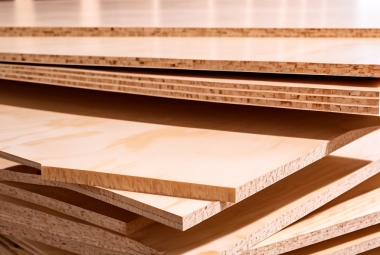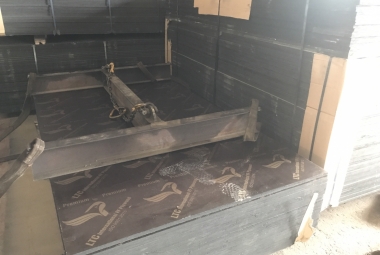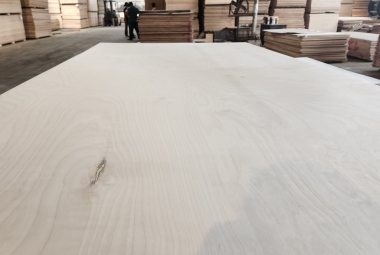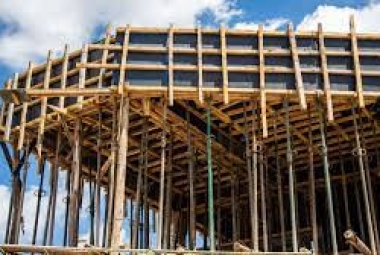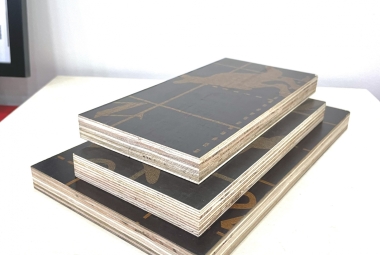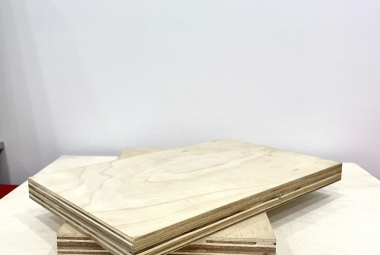From Timber to Smart Construction Material Board : The Journey of Film-Faced Plywood Manufacturing
Manufacturing film-faced plywood involves a detailed process that requires precision and adherence to specific steps. Below is a comprehensive guide outlining the key stages involved in the production of film-faced plywood
Step 1: Raw Material Selection
1.1 Log Selection
Choose high-quality logs of suitable wood species, often birch, poplar, acacia, rubber or eucalyptus.
Step 2: Log Preparation
2.1 Log Peeling
Use a rotary lathe to peel the logs into thin veneer sheets. This process must yield uniform and defect-free veneers.
2.2 Veneer Drying
Dry the veneer sheets to the required moisture content, ensuring stability and minimizing the risk of warping.
Step 3: Adhesive Application
3.1 Adhesive Mixing
Prepare the adhesive mixture, commonly a phenol-formaldehyde resin known for its water-resistant properties.
3.2 Adhesive Coating
Apply the adhesive onto the veneer sheets. Ensure an even and consistent coating to facilitate a strong bond.
3.3 Layer Stacking
Stack the veneer sheets, aligning the grain direction of each layer perpendicular to the adjacent one. This cross-grain configuration enhances the plywood's strength.
Step 4: Pressing
4.1 Cold pressing
Pre-press the stacked veneer layers to remove excess glue and ensure uniform distribution.
4.2 Hot Pressing
Subject the pre-pressed stack to high temperature and pressure in a hot press. This process activates the adhesive, bonding the layers into a solid composite panel.
Step 5: Film Coating
5.1 Film Material Selection
Choose the appropriate film material, often phenolic resin or melamine-urea formaldehyde, for coating the plywood surfaces.
5.2 Film Application
Apply the film to the plywood surfaces using methods like lamination or hot-pressing. This film provides resistance to moisture, chemicals, and wear.
Step 6: Curing
Allow the film-faced plywood to undergo a curing process. This step ensures that the adhesive and film set and harden, enhancing overall integrity.
Step 7: Cutting and Finishing
7.1 Precision Cutting
Use cutting equipment to precisely cut the film-faced plywood sheets to the desired dimensions.
7.2 Edge Sealing or Finishing
Seal or finish the edges of the plywood to enhance moisture resistance and create a polished appearance.
Step 8: Quality Control
8.1 Thickness Inspection
Measure and inspect the thickness of each sheet to ensure it meets specifications.
8.2 Adhesive Bonding Inspection
Conduct inspections to verify the strength and uniformity of the adhesive bonding.
8.3 Film Adhesion Inspection
Check the adhesion of the film to ensure it is securely bonded to the plywood surfaces.
8.4 General Panel Integrity Inspection
Inspect the overall integrity of each panel, identifying and addressing any defects.
Step 9: Packaging
9.1 Packaging
Package the film-faced plywood sheets securely for storage and transportation.
Conclusion
Manufacturing film-faced plywood demands precision at every stage, from raw material selection to quality control. Each step contributes to the strength, stability, and resilience of the final product, making it a reliable and versatile material for various construction and woodworking applications.
Furthermore, If you are looking for a top-quality film faced plywood supplier, Hoang Chau is one of your best choices. We have diverse and varied types of sizes, our core plywood can be customized based on your requirements. Thus, let’s take a look at Hoang Chau Film faced Plywood.
Ho Chi Minh City,20 Jan 2024


